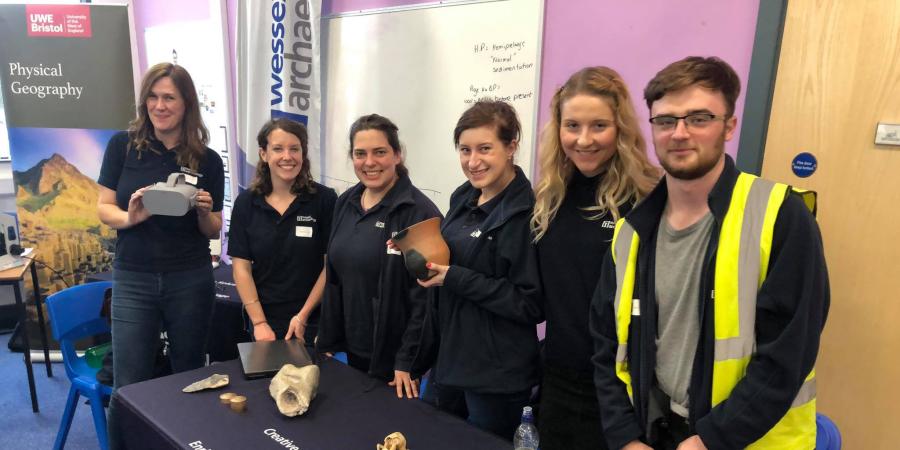To celebrate British Science Week (5th-14th March), we’re highlighting the hard work of our dedicated team of STEM ambassadors.
Our ambassadors come from a range of different departments across Wessex Archaeology, but all make a positive impact on young people; helping them to understand the real word applications of their learning and showcasing different possible careers. They are also invaluable role models.
Read on to find out more from some of our STEM ambassadors in their own words…
Claire Mellett, Senior Marine Geoarchaeologist (left)

"I am a geoarchaeologist and use earth science to understand archaeology. Most of my job involves playing with mud (and occasionally sand). I am interested in reconstructing prehistoric environments so we have a better idea what the landscape was like when our ancestors were alive. The answers to all these questions can be found in the mud. Geoarchaeologists undertake a huge variety of scientific analysis, from firing lasers at grains of sand to find out when an archaeological site was buried, to looking at fossilised grains of pollen down a microscope to find out what plants and trees were growing near a medieval castle.
As a STEM ambassador I have an opportunity to get people interested in the more obscure parts of archaeology. Engaging people with archaeological artefacts such as a mammoth tusk, or roman coin can be straightforward as its an object they can physically hold and see, but how to you get people interested in mud, or landscapes? When working as a STEM ambassador, if I get just one young person interested in geoarchaeology I get so excited, or if I hear a seven year old say the word “alluvium” and then explain to me what it is, I feel like my job as a STEM ambassador is done!"
Sophie Clarke, Finds Technician (left)

"Becoming a STEM ambassador at Wessex Archaeology has been an extremely rewarding experience for me. I have educated and inspired people within a really exciting range of venues; from schools to museums, universities and festivals. I would draw people in by having exciting displays that people can relate to, study and handle. I would discuss my career path with them and help them realise that any goal they wish to achieve is possible.
To be a STEM ambassador you need to have a passion for your job. Confidence and skill develop the more you participate, but the feeling you get knowing you have inspired people towards your career path is a really rewarding experience.
My favourite part of being a STEM ambassador has been all the networking and learning. I have met so many people, learned about other companies and their positive influences, educational tactics, things to work on and incorporating ancient and futuristic technologies to inspire audiences."
Megan Metcalfe, Marine Geophysicist

"My job is to use geophysical data to find archaeology on and below the seabed. This can be things such as shipwrecks and plane wrecks, but it can also include mapping out drowned landscapes that may have been home to humans many thousands of years ago during periods of lower sea level.
Being a STEM ambassador involves talking to people of all ages (mostly online at the moment!), to show them how science is used in archaeology, what different jobs they could do by studying science and tell them about my own career journey. People aren’t always aware that science is used a lot in the world of archaeology. I think it’s important that people, particularly young people, get the chance to see how science and technology is used in everyday jobs.
I really enjoy working as a STEM ambassador and engaging with people about my job. One of my favourite parts of my job is the feeling of discovery- geophysical data gives us lots of clues, but it’s not always easy to work out exactly what’s going on from one data set alone. Part of my job is to bring together all the information, which includes geophysical interpretation, historic records (such was recorded wrecks) and any ground truthing (such as dive/ROV reports or geotechnical logs), in order to more accurately interpret what we’re seeing in the data. Sometimes it can feel a bit like solving a puzzle, and I really enjoy the satisfaction of being able to work something out. Being a STEM ambassador allows me to share some of that excitement and enjoyment with others."
Thank you again to all our STEM ambassadors - we can't wait to hear more about your work in future!
